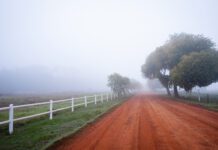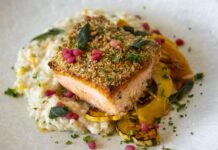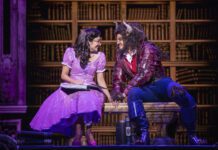Fashion design is art, and Dante Biss-Grayson and Nicole Moan are fashion designers because, well, art would not leave them alone.
“I didn’t grow up wanting to do fashion,” says Biss-Grayson, who is a member of the Osage Nation and spent part of his childhood with his grandparents in Pawhuska. “I grew up wanting to be an artist.”
Moan’s parents were artists, and when she was 11, she started sewing her own clothes. She knew she had a creative spark, but she also sought stability.
“I went to school for automotive and engineering, because I was afraid of not being able to make ends meet.” But art, Moan says, “came back and just bit me. I can’t get away from it.”
Both artists give the world beautiful things to see and wear – and both create with philanthropic missions in mind.
Biss-Grayson attended the Institute of American Indian Arts in Santa Fe, where his mother was a student, as well as the Gerrit Rietveld Academy in Holland. He spent 12 years with the U.S. Air Force and as a Department of Defense contractor, and after multiple deployments, recognized in himself the symptoms of post-traumatic stress disorder.
He turned to art, but not just to heal himself. He wanted to help fellow veterans, and the Missing and Murdered Indigenous Women (MMIW) epidemic was heavy on his heart. Military veterans have a high suicide rate, and homicide is among the top five causes of death among young Native women.
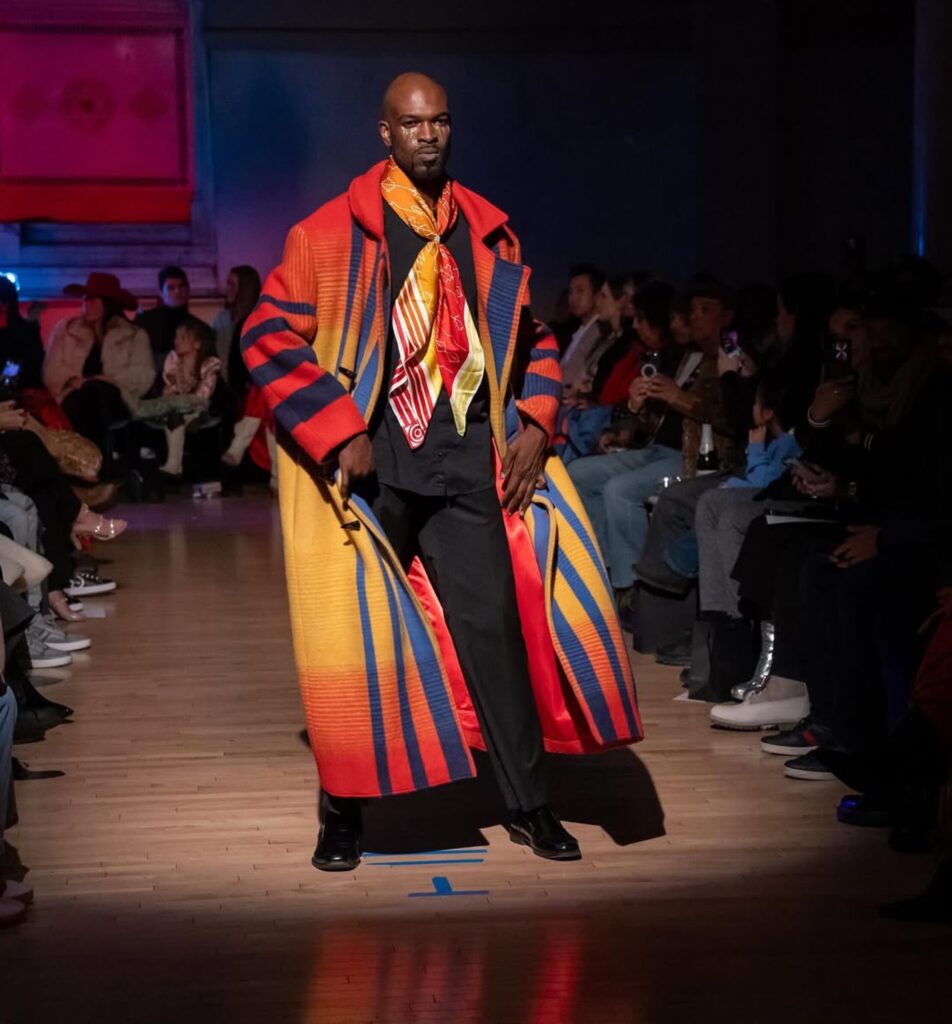
He and his wife, Yanti, created the Sky-Eagle Collection, and his first piece was a skirt printed with the red hand that is the symbol of the MMIW movement.
“The red hand symbolizes the connection between the physical world and the spiritual world,” according to the MMIW website. “Native Americans believe that the dead can see red, so by wearing red, we invoke the help of our ancestors and spiritual guides.”
Moan, based in OKC, studied art at Oklahoma City Community College. Her first pieces were decorative tiles and wall sculptures, but she’s since become known for her wearable art.
“I made my first ceramic corset in 2000,” she says. “I was making custom tile, and we needed something to wear to an event. When you are a poor artist, you learn how to make ends meet.”
When she showed up wearing her first creation, “we definitely had everybody talking to us,” she recalls. “I still have the first ones, they are hung up on my wall. They are kind of barbaric looking,” she adds with a laugh.
Ceramic corsets had been around for a while, but Moan says she was the first to make a wearable version. She’s since branched out to design matching skirts and headpieces, along with jewelry and handbags.
Biss-Grayson started with ribbon skirts, including sponsoring a project to design and manufacture 400 skirts to donate to battered women’s shelters on reservations.
“Ribbon skirts are good medicine,” he says. “But they have evolved, and there are contemporary ones that I’m designing, and I design couture ribbon dresses.”
The Sky-Eagle Collection now includes dresses, scarves, neckties, track suits and men’s ranch shirts, in vivid colors with Native-inspired motifs. Biss-Grayson’s designs have been seen on the red carpet at the Cannes Film Festival and on Oscar night, and twice at New York Fashion Week.
“We’ve evolved from a brand to an actual fashion house,” Biss-Grayson says of the business based in Taos, N.M. “We do business consultation, brand development, media marketing. We produce fashion shows.”
Biss-Grayson’s rise has been part of a renaissance in Indigenous fashion.
“Native fashion shows are popping up all over the place,” he says. “Our motto is ‘Native fashion is for everybody, for all ages and sizes.’”
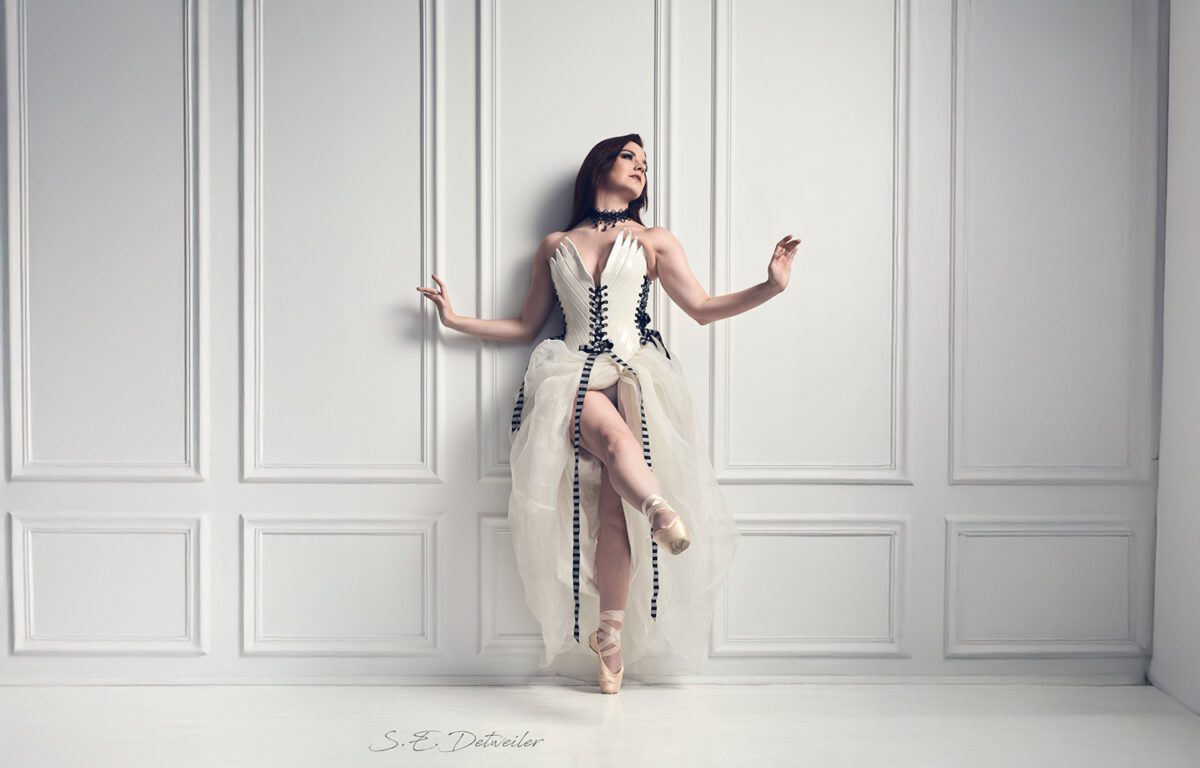
After he does a show that includes those outside the “usual” model body type, Biss-Grayson says, “a lot of people message me and thank me for opening up the runway for everybody. I think everybody should have a chance to look good and feel good.”
Moan has exhibited at fashion weeks in Dallas, Kansas City and Los Angeles. Every day she works, preparing for the next festival or fashion show. This was her first year to be chosen for the Oklahoma City Festival of the Arts.
In the midst of all that industry, Moan finds contentment. She lives in a house filled with plants that she has owned since she was 19. Her studio, powered by solar energy, is on her property, as is a garden and lots of animals. She walks five miles every morning and evening, often stopping to greet her neighbors and their pets. She recently acquired a loom and plans to start making her own fabric from found items.
And she finds the time to share her skills. When friends give up sewing, they donate their fabric to her, and sometimes even their sewing machines. She teaches others how to sew, then gives them a machine. She does the same thing with kilns – thermally insulated ovens most often used for pottery and ceramics.
“We have to work as a community, right?” she asks.
Biss-Grayson continues to paint, with an exhibition of his expressionist landscapes planned for November at the Taos Art Museum. His newest fashion creations include trench coats and high heels, and he recently designed neckties for employees of the Osage casinos.





